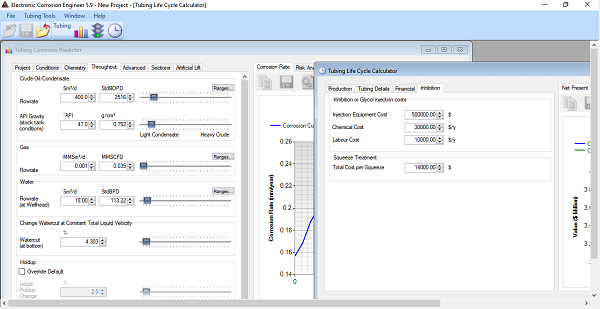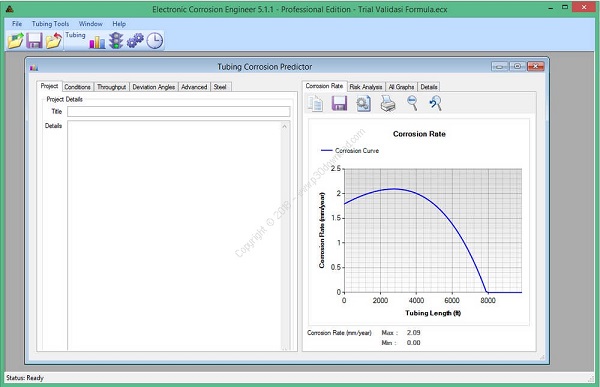Intetech Electronic Corrosion Engineer 5.4
Intetech Electronic Corrosion Engineer 5.4 (ECE) is a specialized software designed to assist engineers in the oil and gas industry with the management of corrosion in pipelines and other critical infrastructure.
Intetech Electronic Corrosion Engineer 5.4 Description
The software provides comprehensive tools for assessing, predicting, and mitigating corrosion, which is crucial for maintaining the integrity and safety of assets. Intetech’s Electronic Corrosion Engineer (ECE) is a powerful tool for managing corrosion in the oil and gas industry.
By providing advanced corrosion prediction models, comprehensive data management, and robust analysis tools, ECE helps engineers ensure the integrity and safety of critical infrastructure. Its ability to integrate real-time data, support risk-based inspection planning, and generate detailed reports makes it an essential solution for effective corrosion management and regulatory compliance.
The output of this software is based on Excel and tabular data and performs the required calculations quickly within this environment. Intetech Electronic Corrosion Engineer is also capable of determining the amount of organic acids to control pH to prevent corrosion in industrial environments.
Features Of Intetech Electronic Corrosion Engineer 5.4
- Corrosion Prediction Models:
- Advanced Algorithms: Utilizes sophisticated algorithms to predict corrosion rates based on various environmental and operational parameters.
- Material Selection: Assists in selecting appropriate materials for specific conditions to minimize corrosion risk.
- CO₂ and H₂S Corrosion Models: Includes models specifically for predicting CO₂ and H₂S corrosion in pipelines and equipment.
- Data Integration and Management:
- Data Import/Export: Supports importing data from various sources and exporting results for reporting and further analysis.
- Centralized Database: Maintains a comprehensive database of corrosion-related data, including material properties, environmental conditions, and inspection results.
- Real-Time Data Integration: Integrates real-time data from sensors and monitoring systems to provide up-to-date corrosion assessments.
- Risk-Based Inspection (RBI):
- Inspection Planning: Helps develop risk-based inspection plans to prioritize inspection activities based on corrosion risk.
- Risk Assessment: Quantifies corrosion risk to prioritize maintenance and inspection efforts.
- Lifecycle Management: Supports the entire lifecycle of assets, from design and construction to operation and decommissioning.
- Simulation and Analysis:
- Scenario Analysis: Allows users to simulate various scenarios to understand the impact of different factors on corrosion rates.
- Sensitivity Analysis: Identifies key parameters that significantly influence corrosion and helps in optimizing control measures.
- Failure Analysis: Assists in analyzing past failures to improve future corrosion management strategies.
Password: 123









